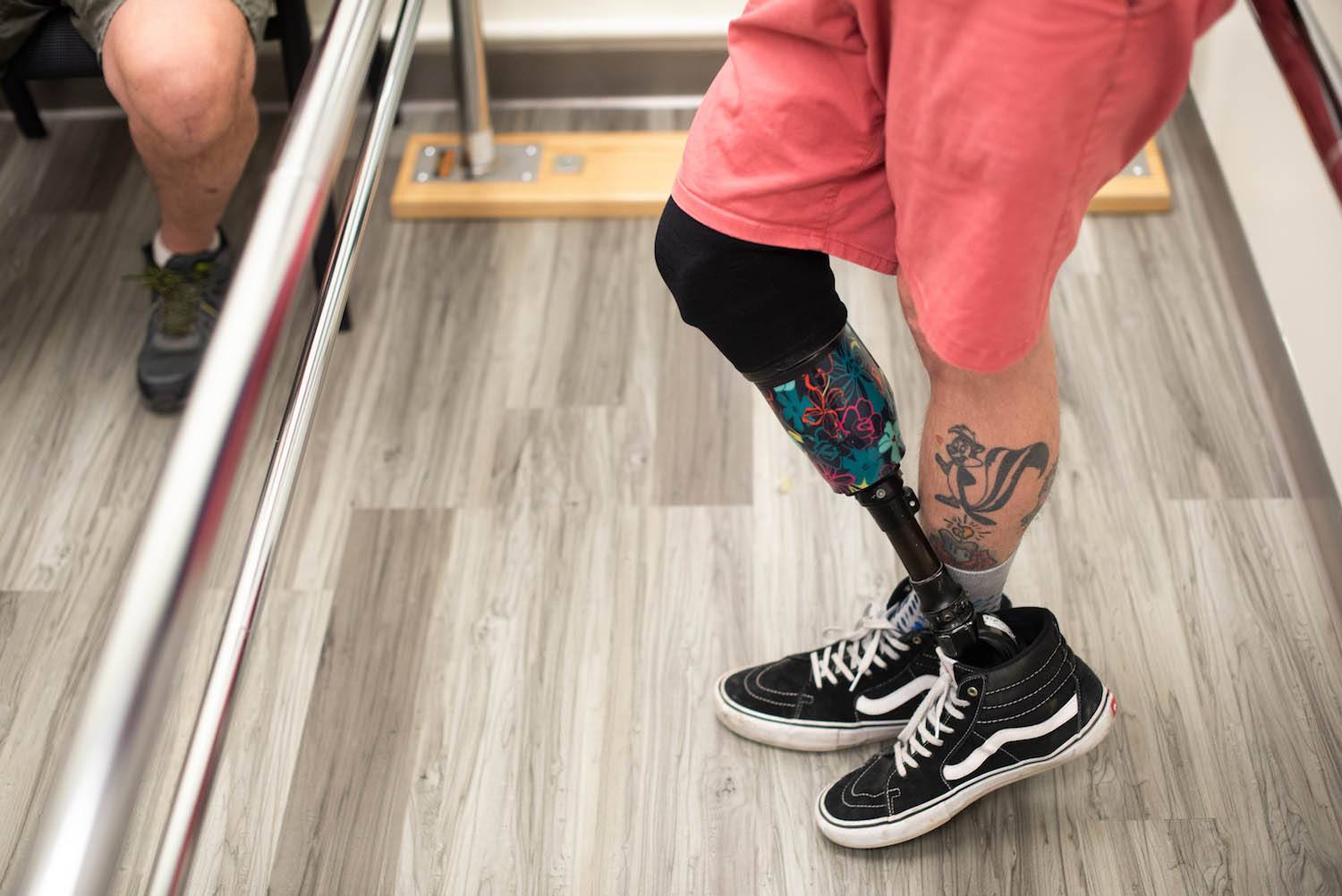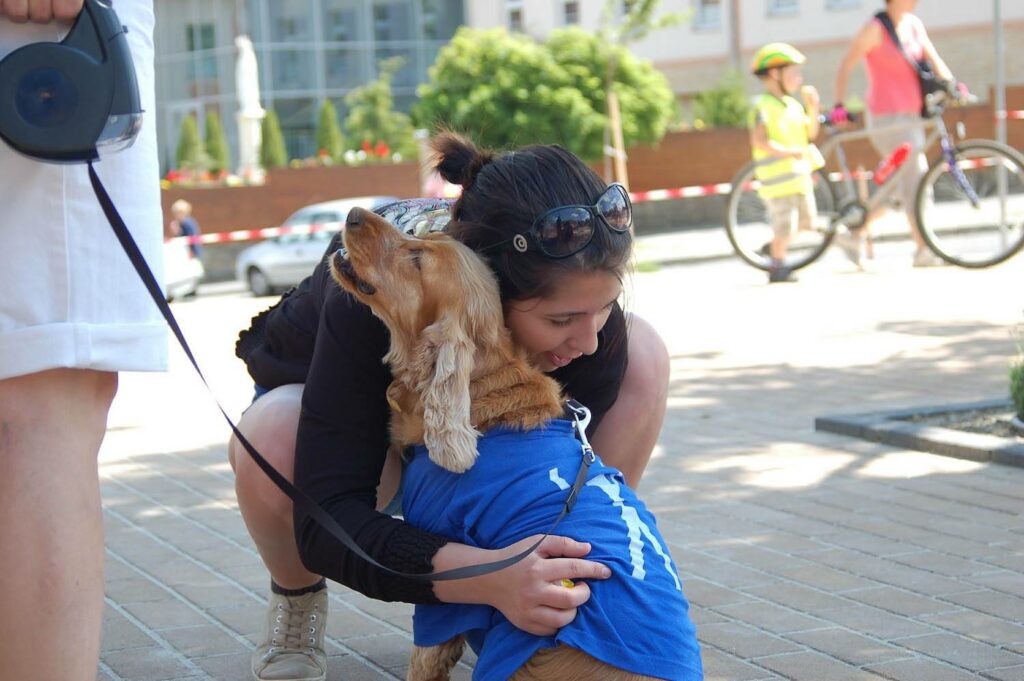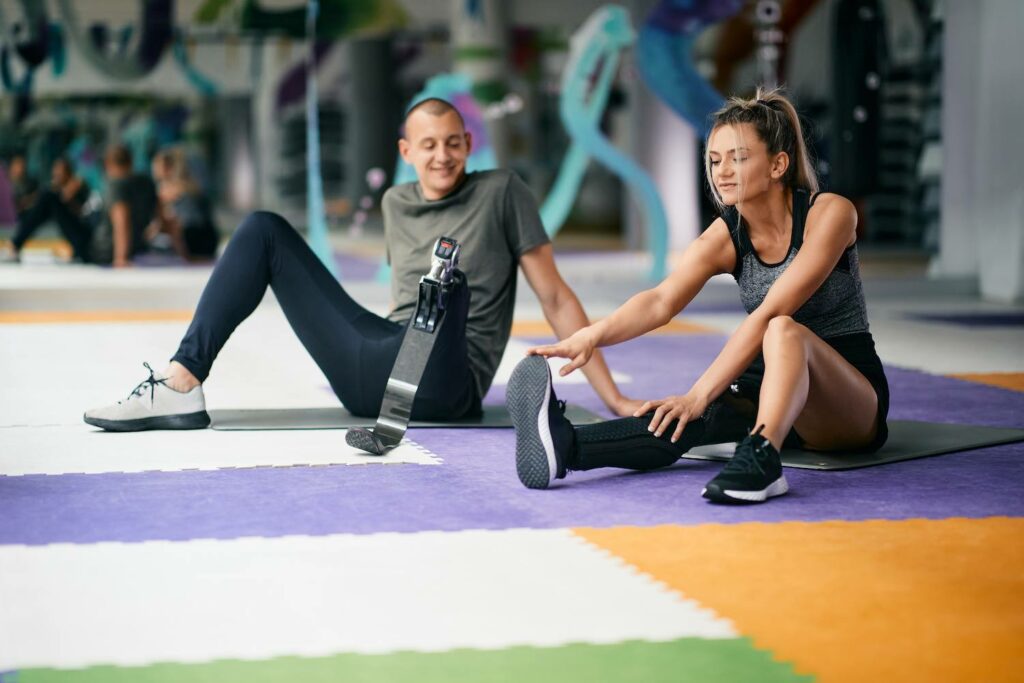
The Different Kinds of Lower Extremity Prosthetics & Positions
There are all types of prosthetics, and humans have been creating and using them for a long time. The first found example of a lower-limb prosthesis is a big toe from Ancient Egypt, circa 1000 BCE. That may sound strange, but the big toe is essential for walking and was necessary to wear the type of sandals found in Ancient Egypt. As centuries have gone by, the different types of prosthetic legs for below the knee and above the knee amputees have come a long way. If you are an amputee or an amputee’s loved one, here are some different kinds of prosthetic legs you should discuss with your doctor and prosthetist.
Exoskeleton and Endoskeleton Prosthetic Legs
Exoskeleton prostheses are an older type of prosthesis construction. They consist of a hard outer shell that is often load-bearing for the amputee. Exoskeleton prostheses are designed to be permanent and their hard outer shell makes adjustments and alterations difficult to perform without compromising the prosthesis’s integrity. In contrast, endoskeleton prostheses are the most common kind of prosthetic leg used today. They are significantly more modular and often allow for components to be adjusted, repaired, and upgraded with increased ease.
Complexity in Different Kinds of Prosthetic Legs
Prosthetic legs come in two types based on the amputation site, transfemoral prosthesis, and transtibial prosthesis. A transfemoral prosthesis is more commonly known as an above-the-knee (femur) prosthetic leg. Leaving transtibial prosthesis to refer to the tibia, a below-the-knee prosthetic leg.
The complexity of different kinds of prosthetic legs is determined most acutely by the amputee’s needs and lifestyle. By nature of the need to include a knee joint mechanism, upper leg prostheses are more complex than transtibial prosthetic legs. In fact, upper leg prostheses are some of the most complex types of prostheses because they are incredibly critical to an amputee’s quality of life. A transfemoral prosthetic leg plays a significant role in determining an amputee’s ability to sit, stand, balance, and move around.
Both transtibial and transfemoral prostheses need professional analysis to the amputee’s daily living needs to provide the right prosthetic leg solution. The different components used in these prosthetic legs will vary on the amputee’s activity level. There is a significant difference in requirements between an older amputee with difficulty balancing and an active amputee that needs a leg prosthesis that helps them continue the running and jumping necessary to play basketball. Even a home environment can make an enormous difference in an amputee’s needs, such as living in a home with a staircase.
Because there are so many factors that go into creating the correct type of prosthetic leg for an amputee, it should come as no surprise how many components are available. For example, there is an estimated 200 types of prosthetic foot positions and more than 75 types of prosthetic knee joints around the world. We will focus on the different kinds of prosthetic foot and knee options available for each unique amputee.
Types of Prosthetic Leg Ankle/Foot Positions
There are four major types of prosthetic ankle/foot positions. Fixed is the simplest and oldest type of prosthetic leg foot position. This type of foot position has no ankle articulation, making it very sturdy and helpful for balance, but hampers mobility when walking. The second type of ankle/foot position provides an amputee up and down motion. This single-axis joint improves mobility while walking on a prosthetic leg across stable ground but does not provide lateral movement support.
A multi-axial joint allows for the foot position to articulate in multiple directions. This enhanced joint movement provides amputees with a more natural walking motion and improved traversal over uneven ground. The last type of prosthetic leg ankle/foot position is the high-performance or “sport” foot position. These positions bend and flex in response to amputee movement giving them a feeling of springiness that enhances an amputee’s ability to participate in higher energy activities like running, jumping, or skiing. Sport prosthetic leg ankle/foot positions are routinely made of fiberglass or carbon fiber and built for performance, often giving them a futuristic aesthetic.
Different Prosthetic Leg Knee Positions
Prosthetic leg knee positions are at the forefront of improved technology for amputees. The most significant advancement leap came in the 1990s with the development of the microprocessor-controlled knee. This knee joint includes sensors that monitor the amputee’s activity, and the microprocessor adjusts the knee joint’s flexion in response. This real-time response to an amputee’s movement provides the closest facsimile to a natural knee joint available at this type. Improvements in microprocessor-controlled knee positions continue making the motion even more fluid while improving battery life and making advances to protect critical components from water damage.
On the other end of the spectrum is the manual lock-knee position. This type of prosthetic leg knee position features a simple lock and unlock mechanism that helps amputees alternate between sitting and standing/walking by manually locking or unlocking the knee joint. Another simple type of prosthetic leg knee position is the single-axis constant friction position. This simple knee position is most commonly used in leg prostheses for children with a lower center of gravity and adults with excellent musculoskeletal structure who do not vary their gait or speed when walking.
The weigh-activated or “safety” knee is the most common knee position used in prostheses. This knee position automatically locks and unlocks in response to pressure from the amputee’s body weight. Using pressure as the locking mechanism ensures that the knee position stays locked while weight is on the prosthesis. The amputee needs only to displace their body weight to bend the knee joint for walking or sitting.
The final common type of knee position for lower leg prostheses is the hydraulic/pneumatic knee position. Air or liquid is used in this type of knee position to adjust how quickly the lower leg section of the prosthesis bends and swings in response to the amputee’s movement. The flexion provides a more organic knee and lower leg response to the amputee’s motion to give a more natural gait. Hydraulic/pneumatic knee positions are well-suited to active amputees who don’t require assistive walking devices for mobility.
Finding the Right Type of Prosthetic Leg
While more advanced types of prosthetic legs are often sought after by active amputees, they are not the right choice for all amputees. It is more important to consider lifestyle and living needs to make sure your prosthesis matches your specific need. While advanced positions provide finer articulation and more natural motion, they can be less safe than weight-activated or manual lock-knees and fixed or single-axis foot options. The increased range of motion can result in increased fall chance and injury.
For every amputee, a well-designed prosthesis makes all the difference in the world. At Texas Orthotics & Prosthetics (TOPS), we work with amputees to create a custom prosthesis that fits the amputee’s lifestyle and fitness, plus has a personalized look that reflects your personality and truly becomes an extension of you. Contact us to schedule your appointment.


